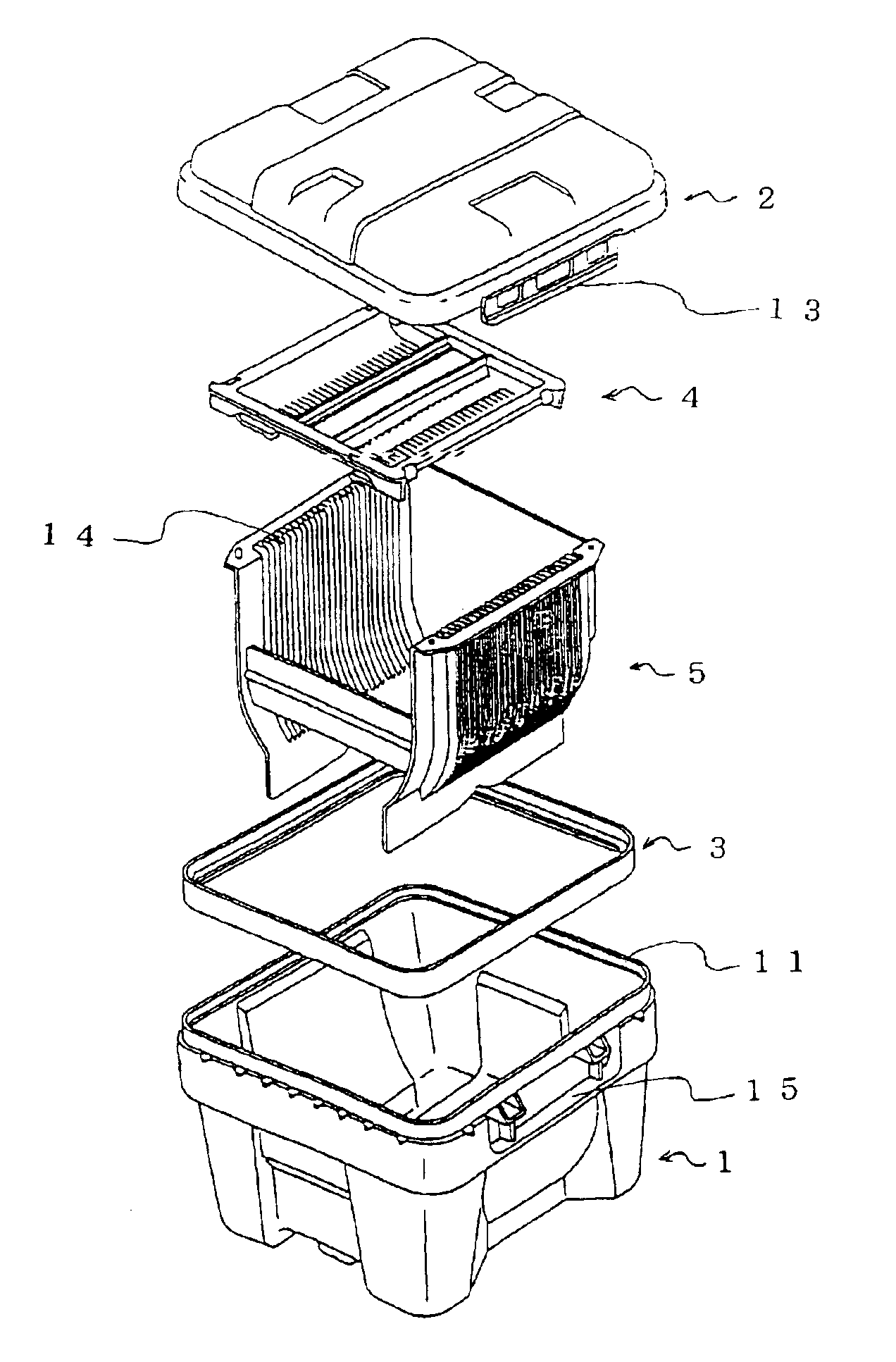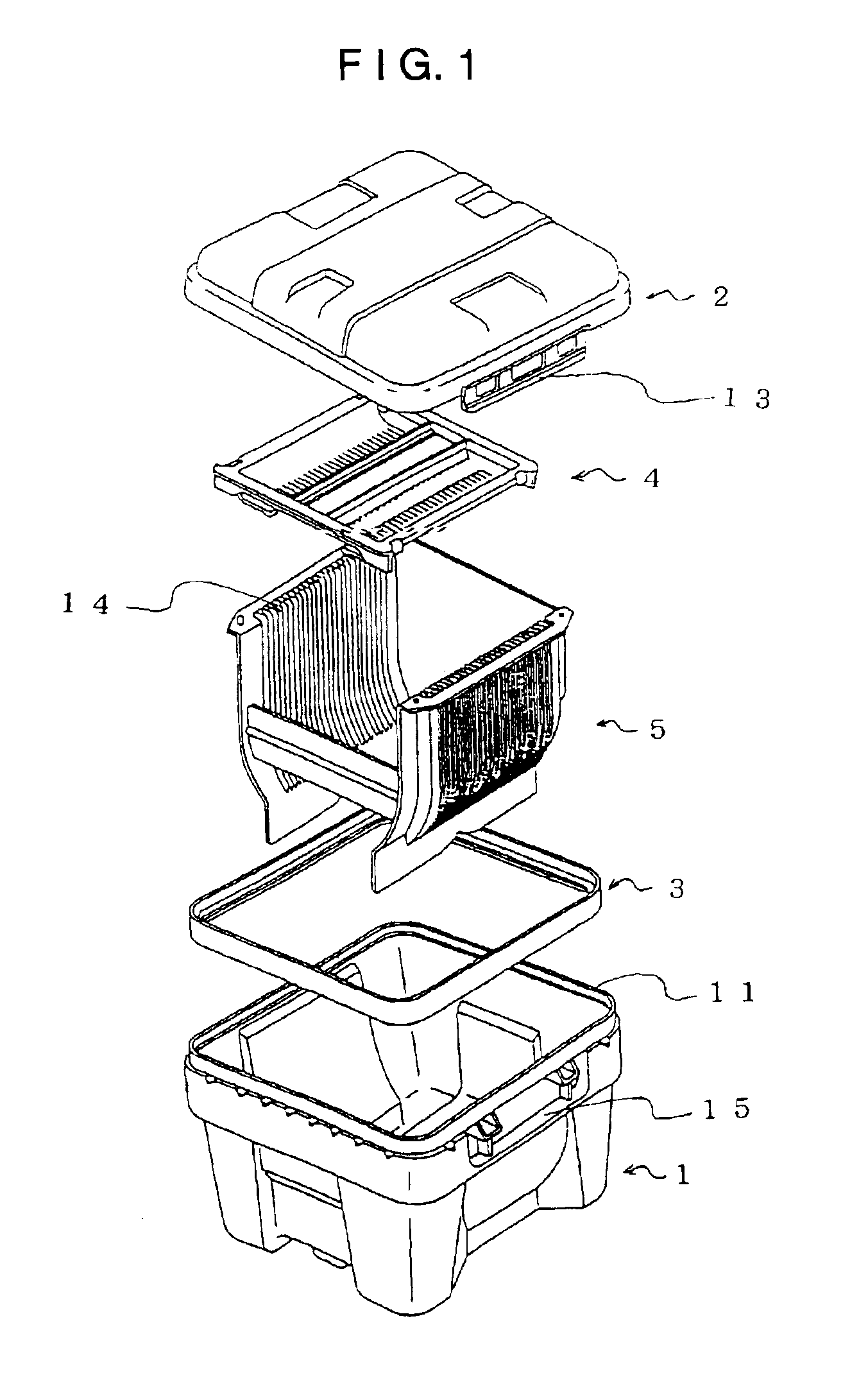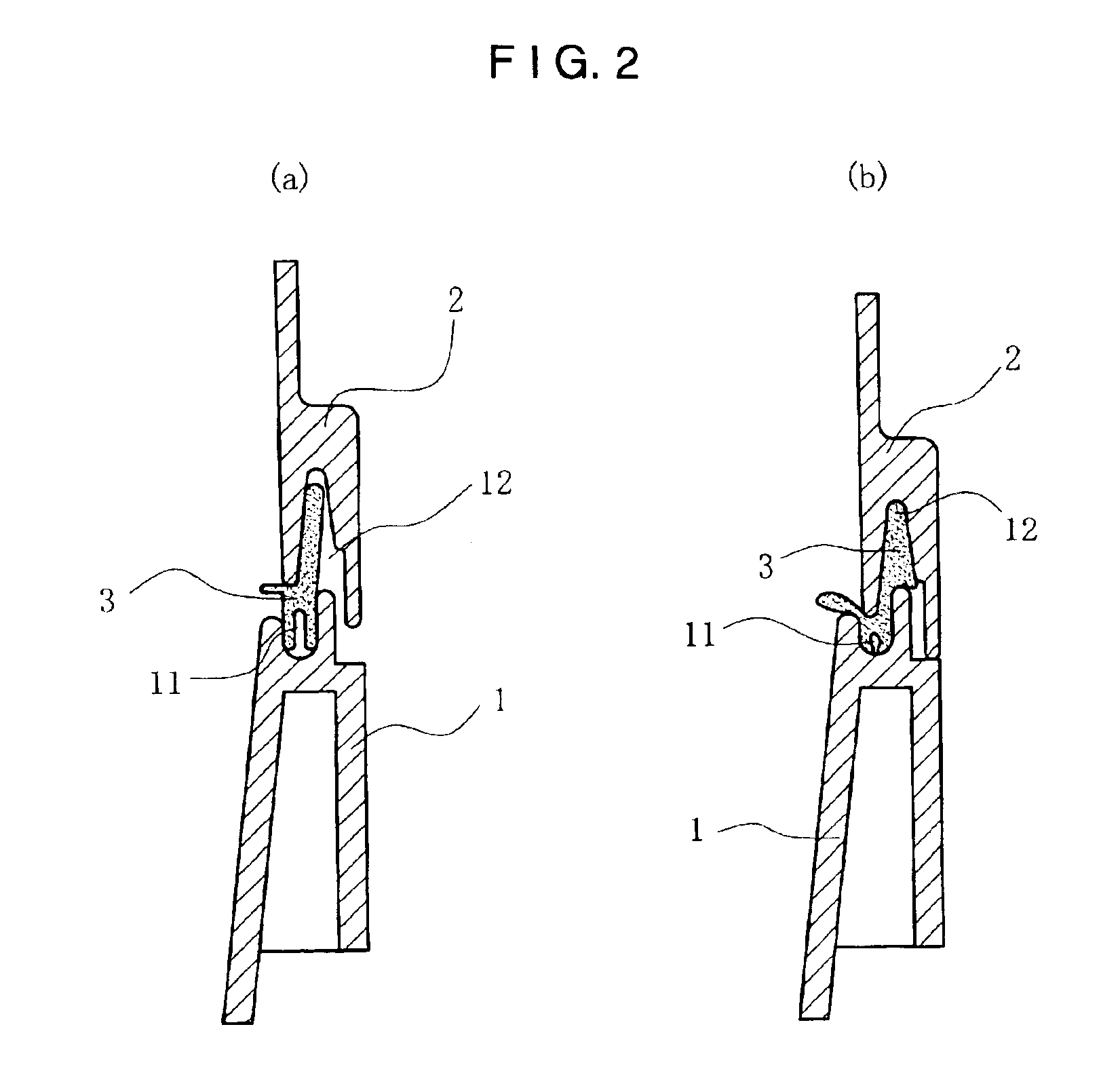Gaskets for substrate containers
a technology of substrate containers and gaskets, which is applied in the direction of sealing, containers preventing decay, and other chemical processes, can solve the problems of gaseous organic matter bleeding to the surface or emission, influence of substrate contamination, and increase the emitted amount, so as to reduce the contamination of the substrate materials contained, reduce the emitted amount, and reduce the effect of substrate contamination
- Summary
- Abstract
- Description
- Claims
- Application Information
AI Technical Summary
Benefits of technology
Problems solved by technology
Method used
Image
Examples
example 1
[0051]Taking dimethyl terephthalate, 1,4-butanediol and polytetramethyleneglycol as the starting reactants, a reaction mixture with admixture of tetrabutyl titanate as a catalyst and a phenolic antioxidant (1,3,5-trimethyl-2,4,6-tris(3,5-di-tert-butyl-4-hydroxybenzyl benzene) as a stabilizer, respectively, was heated to effect an ester-exchange reaction followed by a polycondensation reaction in a vacuum polymerization reactor to obtain a block copolymer of 63A JIS hardness consisting of polybutyleneterephthalate as the hard constituent and polytetramethyleneglycol having an average molecular weight of about 3000 as the soft constituent in a weight proportion of 3:1.
[0052]This polymerizate was extruded by using a double-screw extruder machine of 30 mm screw diameter to be pelletized followed by vacuum drying of the same at 100° C. for 8 hours in a vacuum dryer to give pellets for molding.
[0053]In order to conduct evaluation relative to the amount of gaseous emission generated from t...
example 2
[0063]The ester-exchange reaction and the polycondensation reaction were carried out in the same manner as in Example 1 excepting for the modification in the compounding proportions of dimethyl terephthalate, 1,4-butanediol and polytetramethyleneglycol and omission of the vacuum heating treatment in the stage of pellets to obtain pellets for molding consisting of a block copolymer of JIS hardness 70A of which the hard constituent was a polybutyleneterephthalate and the soft constituent was a polytetramethyleneglycol having an average molecular weight of about 2000 in their composition ratio of 4:1.
[0064]By using the thus obtained pellets for molding, a gasket member of the same form as in Example 1 was shaped by molding, which was subjected to a heating treatment for 4 hours in a heating oven at 60° C.
[0065]The same evaluation tests as in Example 1 were undertaken with the thus obtained gasket member to find that the amount of gaseous emission generated from the molded article and t...
PUM
| Property | Measurement | Unit |
|---|---|---|
| diameter | aaaaa | aaaaa |
| diameter | aaaaa | aaaaa |
| diameter | aaaaa | aaaaa |
Abstract
Description
Claims
Application Information
 Login to View More
Login to View More - R&D
- Intellectual Property
- Life Sciences
- Materials
- Tech Scout
- Unparalleled Data Quality
- Higher Quality Content
- 60% Fewer Hallucinations
Browse by: Latest US Patents, China's latest patents, Technical Efficacy Thesaurus, Application Domain, Technology Topic, Popular Technical Reports.
© 2025 PatSnap. All rights reserved.Legal|Privacy policy|Modern Slavery Act Transparency Statement|Sitemap|About US| Contact US: help@patsnap.com



